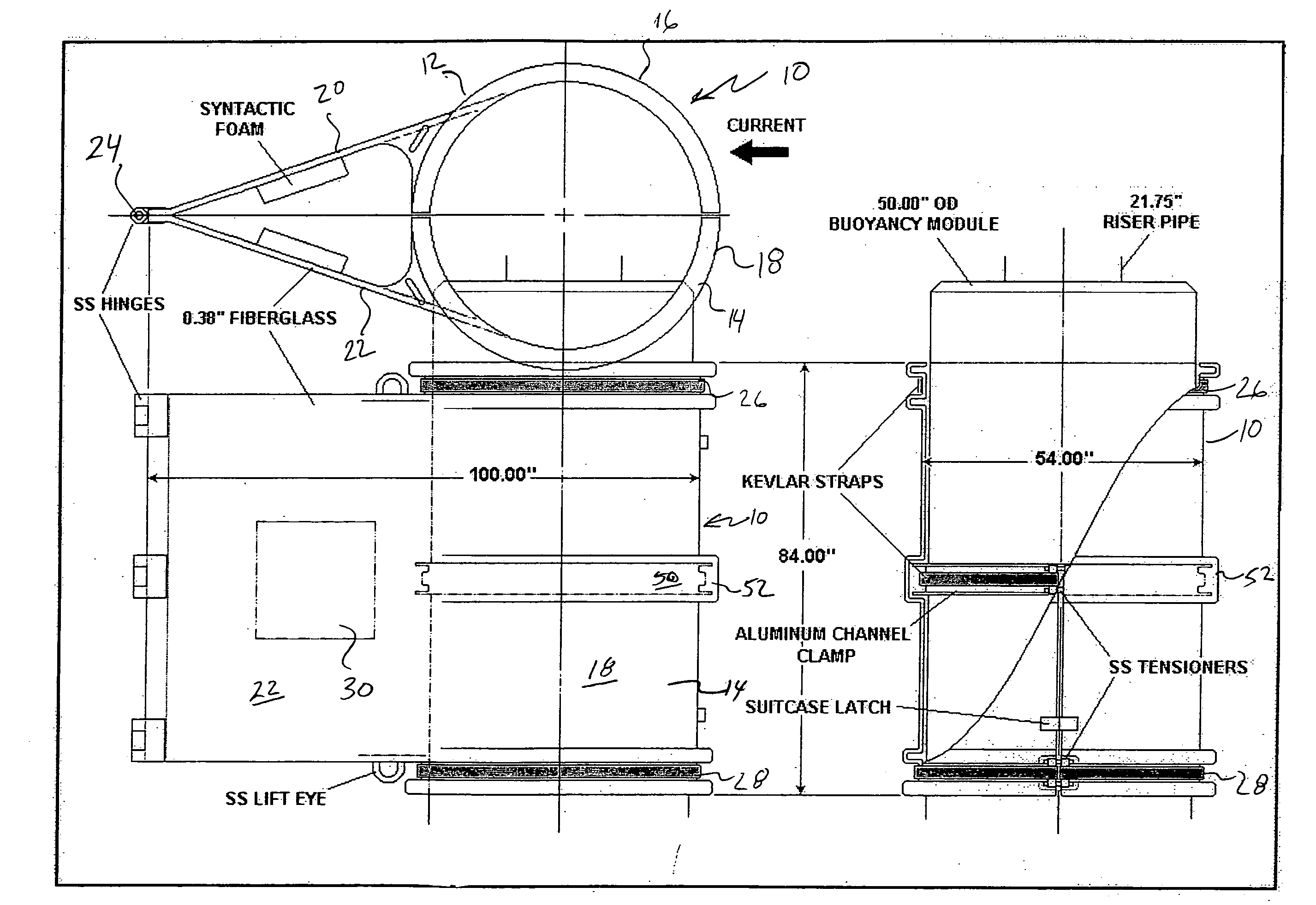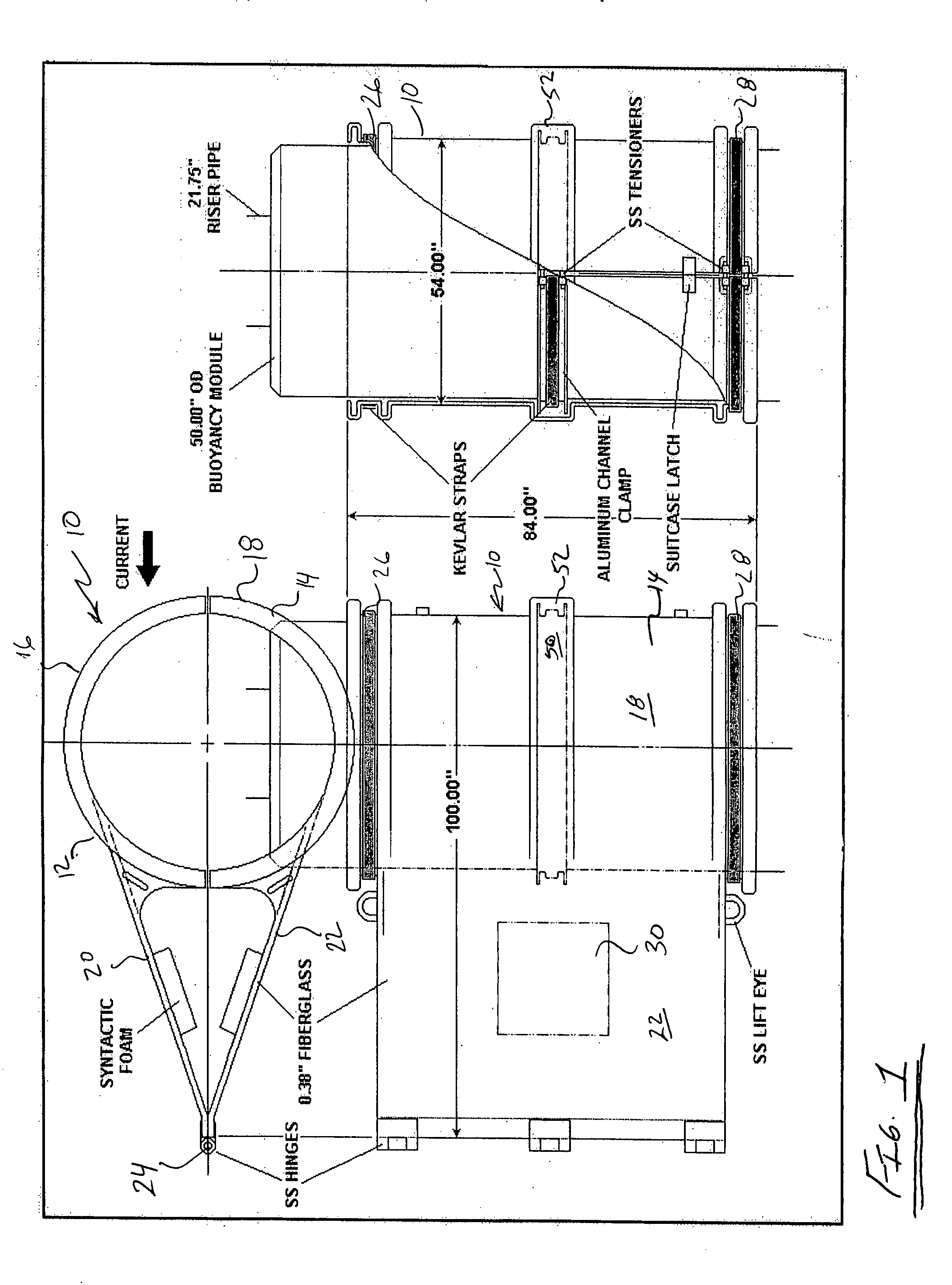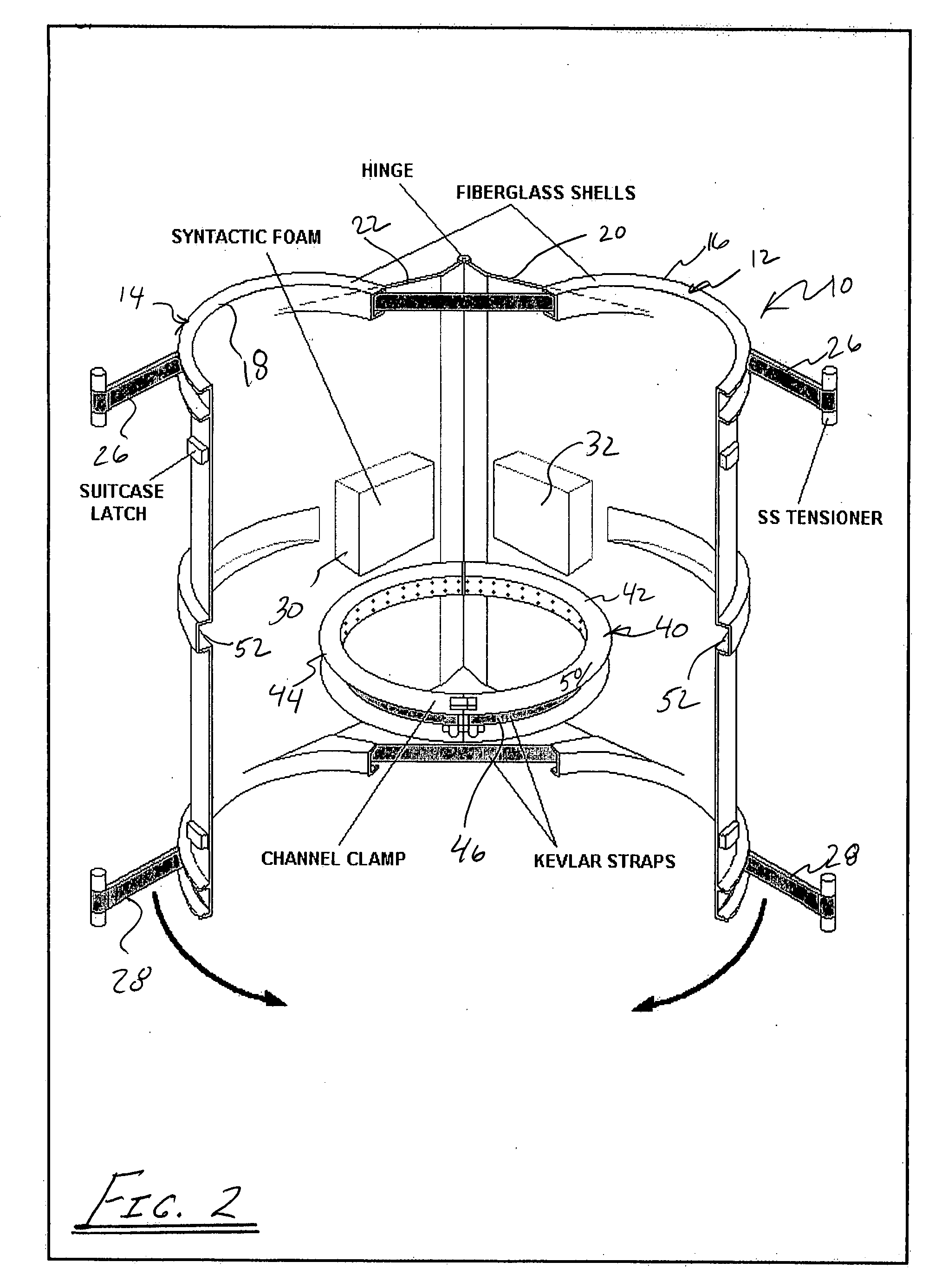Fairing for marine drilling risers
a technology for fairings and risers, applied in the direction of drilling pipes, pipe laying and repair, mechanical equipment, etc., can solve the problems of increasing the danger of equipment failure, now being encountered, and partly successful
- Summary
- Abstract
- Description
- Claims
- Application Information
AI Technical Summary
Benefits of technology
Problems solved by technology
Method used
Image
Examples
Embodiment Construction
[0013]FIG. 1 illustrates a top view and several side views of a fairing 10. The fairing 10 includes first and second fairing halves 12, 14 that are hinged and operatively secured together. The first and second fairing halves 12, 14 are preferably constructed of fiberglass. The first fairing half 12 includes a first sidewall 16 (e.g., semi-circular), while the second fairing half 14 includes a second sidewall 18 (e.g., semi-circular). The first and second fairing halves 12, 14 include first and second tails 20, 22 respectively, which extend from their associated fairing half and are joined together at a hinge 24.
[0014]FIG. 2 illustrates a perspective view of the fairing 10 in the open position. The fairing also includes first and second synthetic straps 26, 28, such as for example KEVLAR straps that are used with associated stainless steel tensioners and suitcase latches to securely close the fairing in an operable position around the buoyancy module. Strong and flexible straps of ar...
PUM
 Login to View More
Login to View More Abstract
Description
Claims
Application Information
 Login to View More
Login to View More - R&D
- Intellectual Property
- Life Sciences
- Materials
- Tech Scout
- Unparalleled Data Quality
- Higher Quality Content
- 60% Fewer Hallucinations
Browse by: Latest US Patents, China's latest patents, Technical Efficacy Thesaurus, Application Domain, Technology Topic, Popular Technical Reports.
© 2025 PatSnap. All rights reserved.Legal|Privacy policy|Modern Slavery Act Transparency Statement|Sitemap|About US| Contact US: help@patsnap.com



